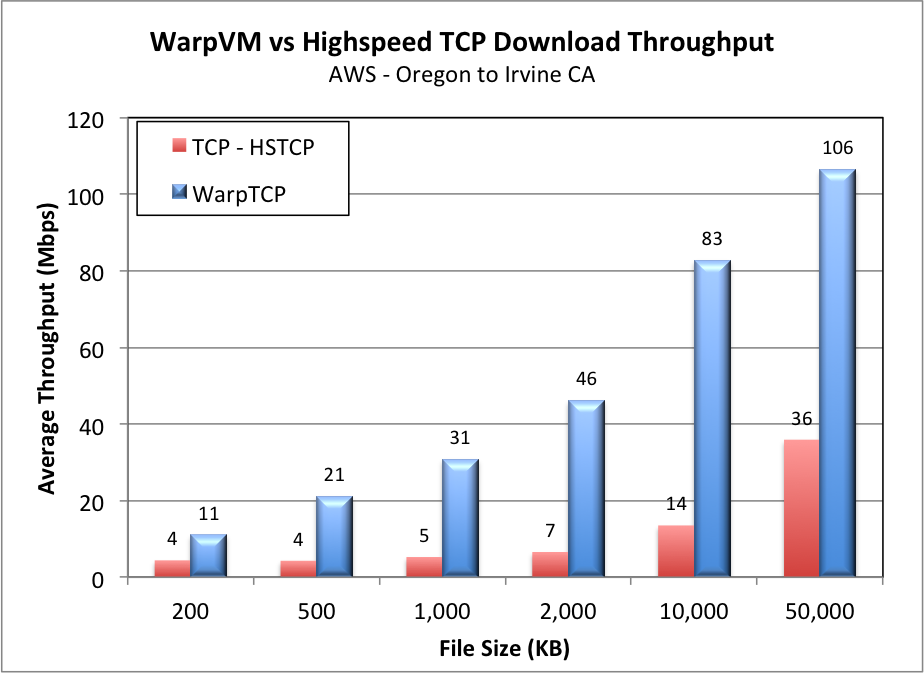The recent releases of Google’s BBR TCP and Badu Network’s WarpTCP are signaling that TCP Cubic’s days are numbered. These new congestion control algorithms dramatically increase throughput for servers and applications in comparison to the previous Linux standard Cubic. With WarpTCP integrated into our Amazon cloud WarpVM TCP optimization appliance, we have measured throughput in common use cases as high as 10X over TCP Cubic. Ultimately this improvement results in faster website load times, higher streaming video resolutions, and more responsive web applications. For e-commerce web sites where page load times have a real impact on revenue, moving to these new algorithms will be a matter of competitiveness.
To address these problems Badu Networks has developed the next generation of WAN Optimization utilizing WarpTCP, and deployed it in both hardware and cloud appliances. WarpVM-2Gbps is the first technology that allows you to use this next generation TCP optimization to accelerate traffic from your AWS cloud to the public; requiring no changes to your servers or users. To meet the growing demand for data throughput, Badu Networks has developed WarpVM-2G for the AWS Marketplace. This virtual appliance gives the highest optimized throughput by 2X, compared to other WAN optimization products.
10X Throughput Improvement to Badly Congested Networks
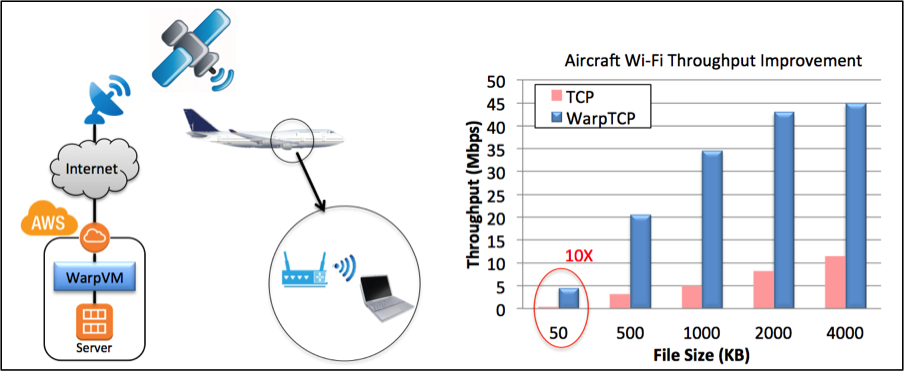
3X Throughput Improvement to a Low Congestion Office Wi-Fi
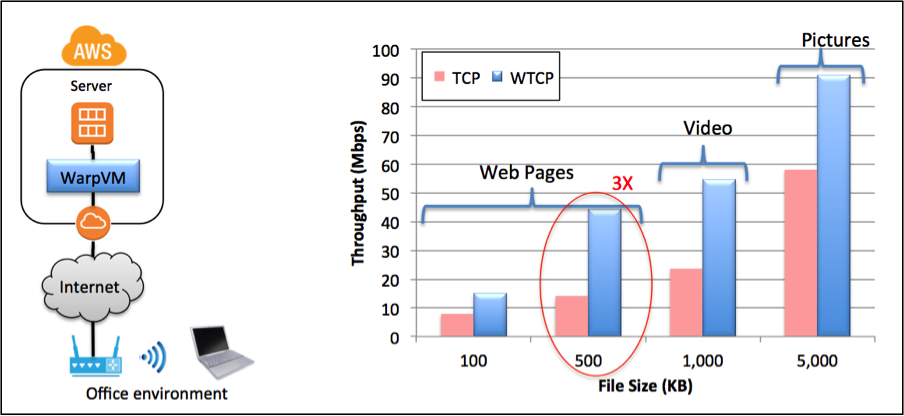
With these improvements in throughput, it’s clear that there are fundamental issues which TCP Cubic did not address.
After spending years working to optimize the higher layers of the OSI communications model in their networks, many IT professional are surprised to see such dramatic improvements from WarpTCP solutions. For example, Application Delivery Controllers (ADCs) from companies like F5, provide good solutions for optimizing applications. Similarly, point-to-point WAN optimization solutions from companies like Riverbed and Silverpeak improve the apparent throughput in the limited use case of transferring data between two specific locations. However, neither of these optimizations successfully addresses underlying problems with TCP congestion control on jittery or congested networks.
Compare for yourself by downloading the free trials of F5 ADC VM and WarpVM on AWS and measuring the throughput benefit.
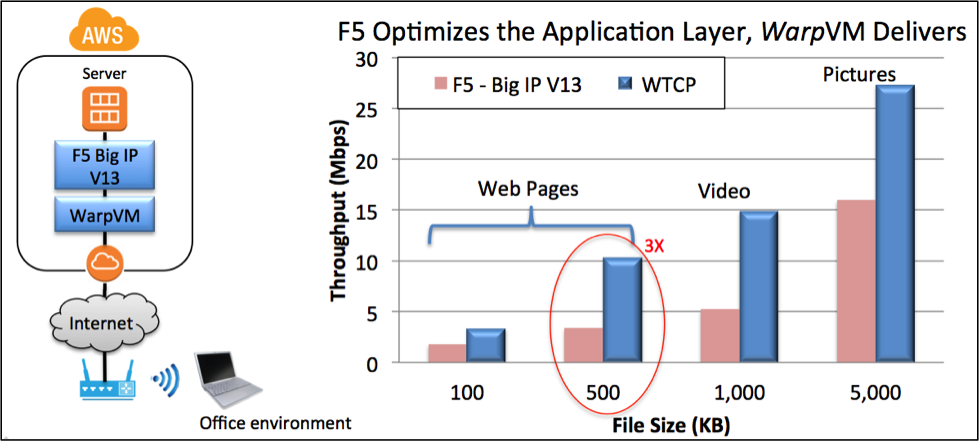
If you want to take advantage of these new TCP algorithms to optimize the delivery of data to your users there are a couple of options.
- Install WarpVM or appliance in front of your servers or ADC
- Switch your cloud network from AWS to the Google Cloud Platform
- Use Linux for your servers and upgrade the applications and Linux kernel to V4.9 or later
How does WarpTCP compare with BBR TCP? We ran those tests and found that while the performance of BBR is dramatically better than TCP Cubic, we still saw WarpTCP with up to 50% throughput benefit with typical Internet traffic.
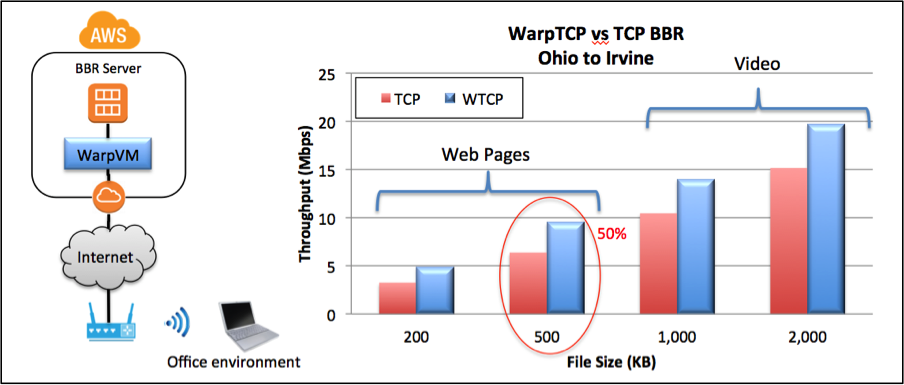
One thing to consider when you try to compare throughput in dynamic networks: you need to average out the variations in the network conditions. To do this, alternate the transfers between optimized and not optimized, while keeping the path the data takes through the network the same for each transfer. The number of trials depends on the precision of the comparison you are trying to obtain, and the variation from one measurement to the next. For the graphs in this presentation typically we ran 30 or more transfers for each file size. We created a simple application to facilitate these measurements that deploys on both the client and server. You can download the application here: https://www.badunetworks.com/downloads/test-tool
Evan McCarthy,
VP Product Badu Networks
Update 8-18-2017:
For comparison purposes, we tested the performance of the WarpVM against TCP – Westwood. We see over 6X improvement for 2M files.
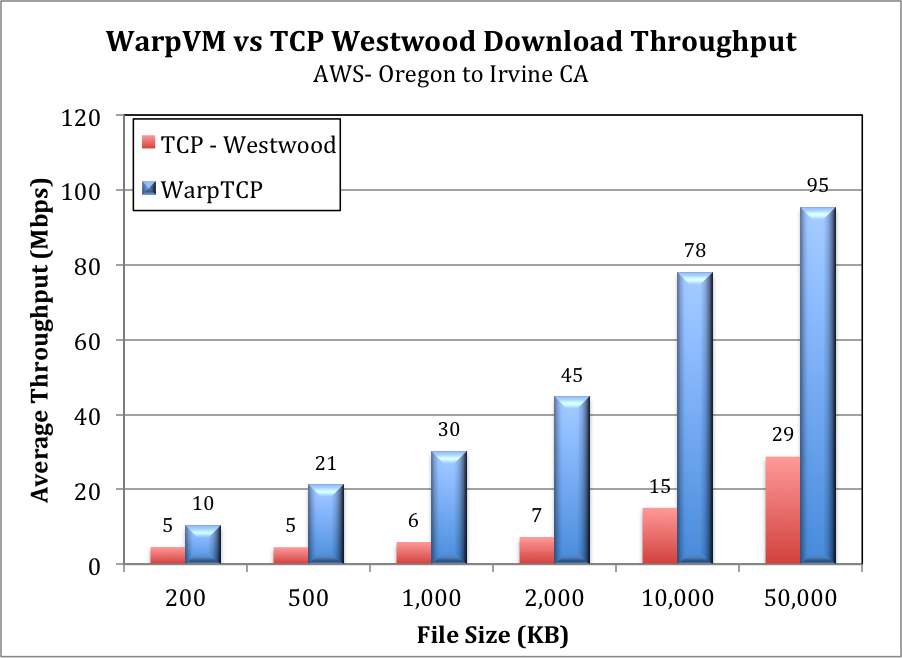
For these measurements we alternate the transfers between optimized use WarpVM, and go directly without using the proxy in the AWS cloud.
Update 8-29-2017:
The same setup and methodology was used for testing against Highspeed TCP (HSTCP). The results are similar to Westwood:
